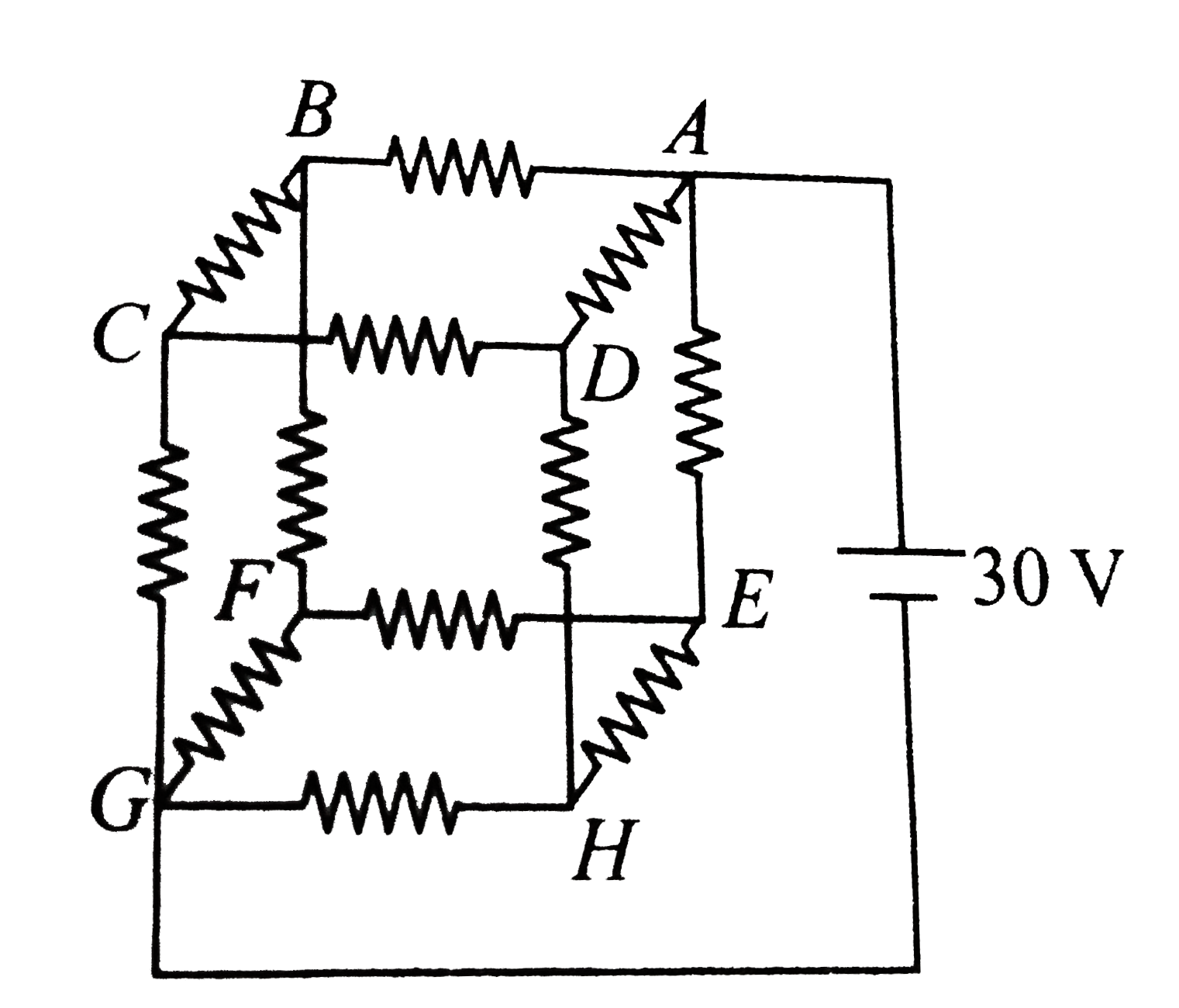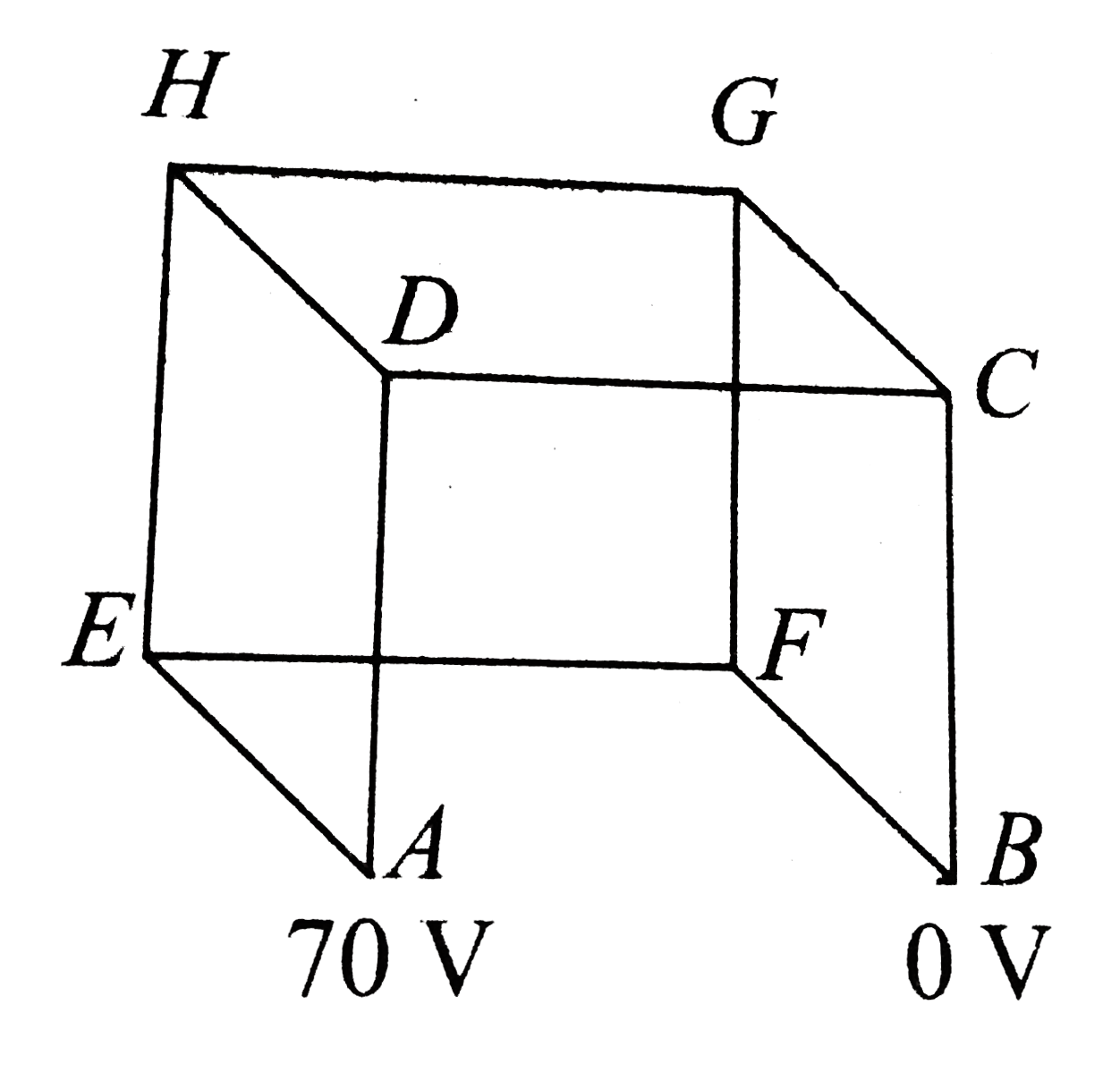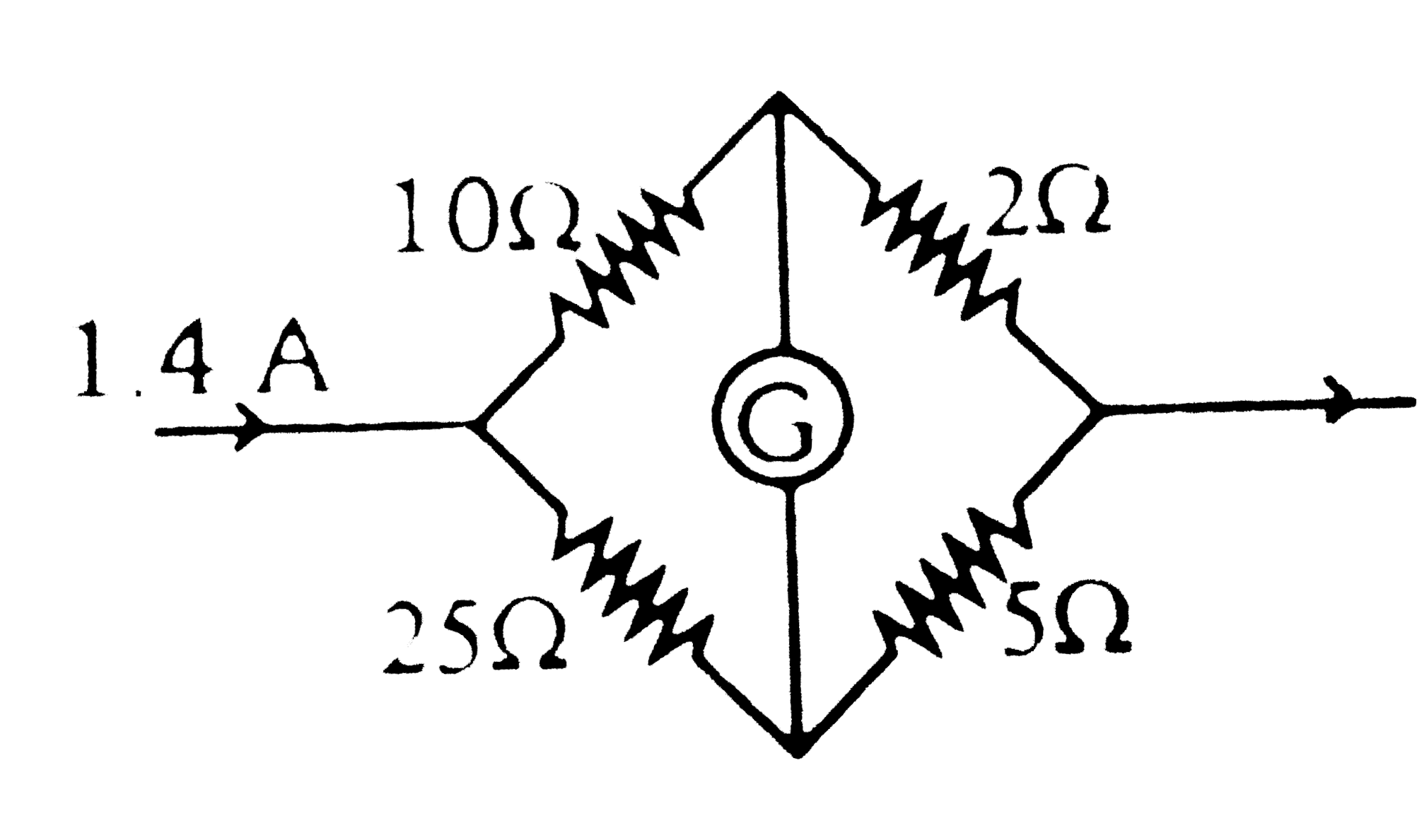Calculate the amount of charge flowing in 2 minutes in a wire of resistance 10Ω when a potential difference of 20 V is applied between its ends
120 C
240 C
20 C
4 C
The correct Answer is:B
To solve the problem of calculating the amount of charge flowing in 2 minutes in a wire of resistance 10Ω when a potential difference of 20V is applied, we can follow these steps:
Step 1: Use Ohm's Law to find the current (I)
Ohm's Law states that:
V=I⋅R
Where:
- V is the potential difference (voltage),
- I is the current,
- R is the resistance.
Given:
- V=20V
- R=10Ω
We can rearrange the formula to solve for current I:
I=VR
Substituting the given values:
I=20V10Ω=2A
Step 2: Convert time from minutes to seconds
The time given is 2 minutes. We need to convert this into seconds because the standard unit of time in physics is seconds.
T=2minutes×60seconds/minute=120seconds
Step 3: Calculate the charge (Q)
The relationship between charge Q, current I, and time T is given by:
Q=I⋅T
Substituting the values we found:
Q=2A⋅120s=240C
Final Answer
The amount of charge flowing in 2 minutes is:
Q=240C
---
Ohm's Law states that:
V=I⋅R
Where:
- V is the potential difference (voltage),
- I is the current,
- R is the resistance.
- V=20V
- R=10Ω
I=VR
I=20V10Ω=2A
The time given is 2 minutes. We need to convert this into seconds because the standard unit of time in physics is seconds.
T=2minutes×60seconds/minute=120seconds
The relationship between charge Q, current I, and time T is given by:
Q=I⋅T
Q=2A⋅120s=240C
The amount of charge flowing in 2 minutes is:
Q=240C
Topper's Solved these Questions
- BOOK - DC PANDEY ENGLISHCHAPTER - CURRENT ELECTRICITYEXERCISE - Taking it together142videos
CURRENT ELECTRICITY
- BOOK - DC PANDEY ENGLISHCHAPTER - CURRENT ELECTRICITYEXERCISE - B. Assertion and reason18videos
CURRENT ELECTRICITY
- BOOK - DC PANDEY ENGLISHCHAPTER - CURRENT ELECTRICITYEXERCISE - Example65videos
CURRENT ELECTRICITY
- BOOK - DC PANDEY ENGLISHCHAPTER - COMMUNICATION SYSTEMEXERCISE - Subjective11videos
COMMUNICATION SYSTEM
- BOOK - DC PANDEY ENGLISHCHAPTER - ELECTROMAGNETIC INDUCTIONEXERCISE - Medical entrances gallery25videos
ELECTROMAGNETIC INDUCTION
Similar Questions
Calculate the current flowing through a wire of resistance 5 Ω connected to a battery of potential difference 3 V.
View SolutionCalculate the current flowing through a wire of resistance 7.5 Ω connected to a battery of potential difference 1.5. V.
View SolutionA current 0.2A flows in a wire of resistance 15Ω. Find the potential difference across the ends of the wire.
View SolutionA resistor circuit is constructed such that 12 resistor are arranged to form a cube as shown in fig. Each resistor has a resistance of 2Ω. The potential difference of 30V is applied across two of the opposing points as shown

In question 20, the potential difference between the points C and G isView SolutionIn the arrangement, 11 wires each of resistance 5Ω are used as sides of cube. A potential difference of 70 V is maintained between corners A and B of cube.

Current flowing in wire Ef isView SolutionIn the arrangement, 11 wires each of resistance 5Ω are used as sides of cube. A potential difference of 70 V is maintained between corners A and B of cube.

Current flowing in wire HG isView SolutionCalculate the potential difference across the ends of a wire of resistance 2Ω'whenacurrentof1.5 A passes through it.
View SolutionA resistor of 6 Ω is connected in series with another resistor of 4 Ω. A potential difference of 20 V is applied across the combination. Calculate :
the potential difference across the 6 Ω resistor.View SolutionA resistor of 6 Ω is connected in series with another resistor of 4 Ω. A potential difference of 20 V is applied across the combination. Calculate :
the current in the circuit,View SolutionCalculate the current flows through resistance 2Ω.
 View Solution
View Solution

